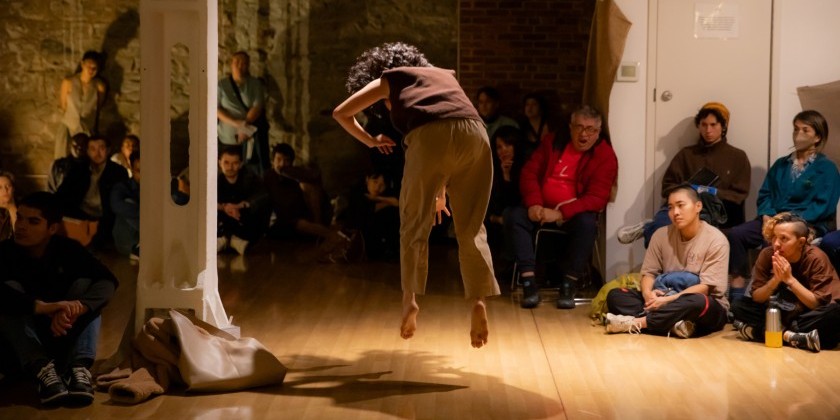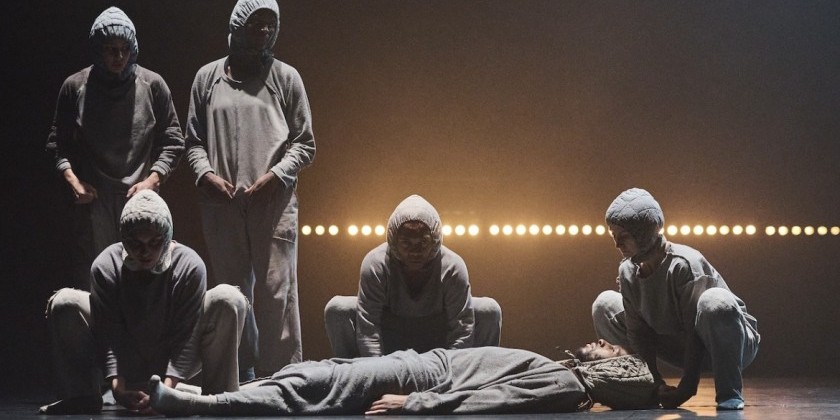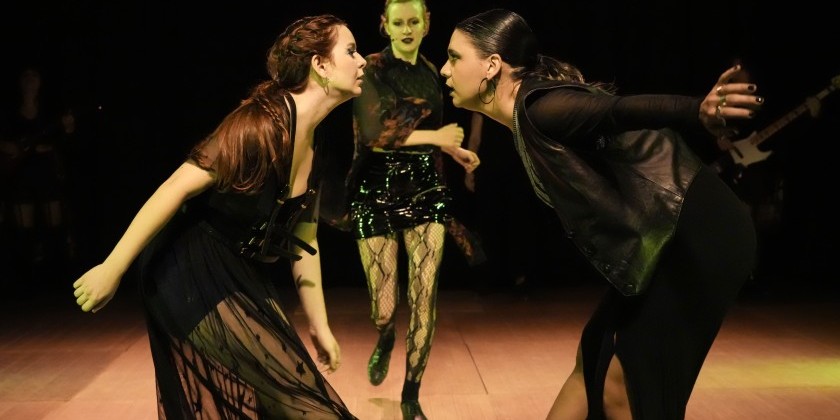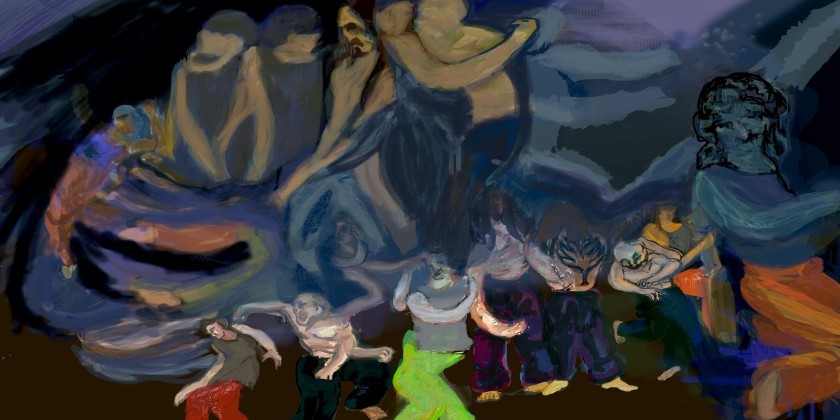AUDIENCE REVIEW: Becky Radway Dance Projects in "Residue"

Company:
Becky Radway Dance Projects
Performance Date:
Oct 5, 2017
Freeform Review:
Becky Radway Dance Projects' Residue has left remnants in my mind since its Brooklyn premiere almost a year ago in October, 2017. I have a keen affinity for site-specific dance that uses an egalitarian approach to all landscapes within that site and an economical movement palate that does not overtly highlight what would otherwise be considered unusual surfaces when compared with traditional concert stages. Upon entering most site-specific performances, I commonly expect to see work that underutilizes its space or relies on predictable movement that over amplifies the “nontraditional” surfaces. Radway quickly dispelled these expectations when she created, within a traditional Brooklyn warehouse of brick and concrete, a wonderland of scaffolding-like steel poles, that could double as a city scape or triple as a web of underground piping lost to this decade, and in it, an inhabited history of personalities and interactions. Part sculpture art installation, part dance performance, part improvisational live music, and part ghost story sans plot, Residue provided a wealth of honest artistic ventures to embrace throughout the evening.
The score by Erik Sanko provided a pulse for the work - sometimes low and ominous and at other times a driving current with melodic piano. It also had the courtesy of stepping aside when live saxophonist and clarinetist Patrick Breiner began to cast his own spell within the space. With rough bursts of screeches and groans from the instrument, it felt as if it were grasping at notes as they skittered away. Eventually, each woodwind would capture a melodic rhythm that filled the brick and steel room with sounds that ebbed and flowed with Breiner’s impressive lung capacity. It would then disintegrate into a breathy dynamism that voids the reed of vibration and instead the instrument, player, and space join into a singular entity. Breiner would percuss onto the brass body of the saxophone, and at times onto the steel piping. The major solo interludes where his sound and presence stopped interweaving throughout the performers and instead took hold of the room may have served as a delineation between sections within the evening, but the momentum of sound and his fully encompassed exploration of the capabilities of himself and his instrument held the room transfixed until he graciously released us into the next choreographic development.
Radway’s company of seven, including herself, would slowly float in and out of the space intermittently. The set and lighting design, in conjunction with the choreography, offered the illusion of bodies simply appearing within the set; the viewer must commit to catching a performer’s entrance or exit and therefore sacrifice more engaging material concurrently materializing. In darker moments, it looked as if the set could extend forever in every direction, providing an ethereal world of metal and grit that exists parallel to our own. Bodies effortlessly slip through the scaffolding-type installation, through and around each other, and provide near invisible support, again thank you to the lighting and set design, to make dancers appear weightless and superhuman. The movement maintained a pedestrian feel with a flair of trained limbs that created patterns and sliced through the space between poles, but larger movements never seemed out of the ordinary. Rather, it felt necessary in order to coexist within the massive structure that created their world. Much of the work was structured as fluid movement in and around the installation, but some satisfyingly organized duet-based phrase work would break out in unison as a moment for the viewer to catch their breath and meditate on a direct pattern of movement repetition.
A turning point a little over half way through my evening’s experience was a playful solo turned duet then trio that provided a satisfying utilitarian use of the set and space. A vertical pole left largely unattended and assumed fixed as the rest of the structure magically became a swinging element, discovered by accident. A solo task-based game of avoidance and testing limitations soon became a spry movement heavy duet when joined by a second performer. The movement continued through this new element of diving and avoiding the swinging steel bar, but the result was an unexpected yet organic moment of character development for the two performers. Mischievous one-up moments between performers escalate until the original solo performer beguiled the other with smooth trickery. A third performer appeared in the space soon after, taking the second performer into a new duet spanning the width of the structure. The pair smoothly glide through obstacles, reaching impressive heights at the top of the structure, and slowly trickle down toward the floor. The original solo performer mischievously interjects at opportune times to exasperate the second performer and gain back the attention. This playful yet impish section played a large part in humanizing these performers who before verged on supernatural. These beings were suddenly relatable, jovial, curious creatures that were now vessels through which we as audience could now inhabit with our own hopes and fears for this world of steel and stone.
Residue ends quietly yet full of wonder. A vertically soaring concrete platform serving as a summit higher than the scaffold structure could offer had been left untouched until this moment. Lights highlight a single performer overlooking the peaks and valleys of metal piping, promising a new level of concept for this world, new landscapes for discovery. Then the lights fade, sound fades, and the promise also fades into darkness and applause. Perhaps it was a promise of what is yet to come at a later date, or perhaps it was only to spark the imagination for an evening’s conversation. Either way, it was a breathtaking image that will live in memory and cause a certain forgetfulness as to why I would have expected anything otherwise.
Author:
Caitlin Dutton-Reaver
Website:
www.beckyradwaydanceprojects.com
Photo Credit:
image from Kickstarter











